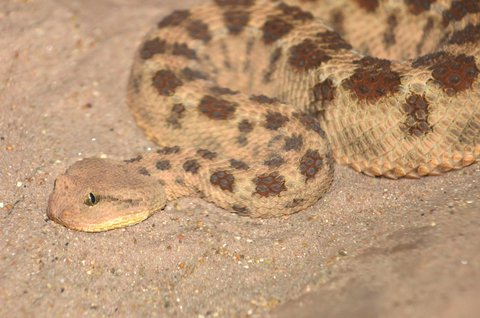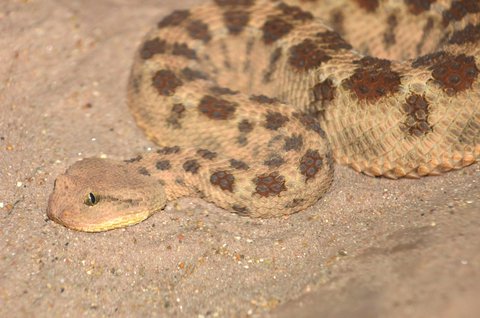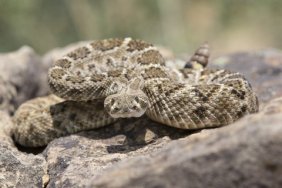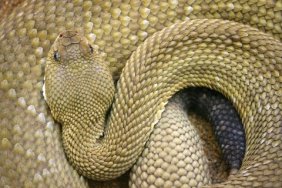
Don’t do this. At all. Ever. We’re talking about finding a rattlesnake and then wrapping it around your neck and then trying to take a selfie with the rattlesnake.
All of you are probably thinking of course you would never do such a ridiculous thing, but all of you are not 36-year-old Alex Gomez of Lake Elsinore, California, who recently decided it would be a good idea to do exactly that. And then the snake bit him on the hand and sent him to the hospital, reports Los Angeles television station KTLA.
“I was going to take it off my neck and do something else with it, but it turned sideways, and it sunk its one tooth into my hand,” he tells the station.
Generally, staying a safe distance from any form of dangerous wildlife while enjoying the outdoors is “Outdoor 101,” especially if you’re dealing with a venomous pit viper with potent venom that causes severe pain, tissue damage, muscle paralysis and in severe cases death.
The strange part of the story is that Gomez reports that while he was handling the rattlesnake and positioning it for the photograph, the animal was exhibiting what he described as an “angry rattle.”
Anyone who’s been anywhere near a genuinely agitated rattlesnake knows the unmistakable, skin crawl-inducing alarm that is an “angry rattle” from a snake. Rattlers actually don’t rattle, they buzz. The sound is an urgent hissing buzz that vibrates the air and leaves no debate at all whether or not any non-rattlesnake that doesn’t get the heck out of the way is going to end up delirious or dead from a sudden and violent shot of poison.
It’s not really hard to understand. We’re not the only ones who were dismayed. The man’s mother Deborah spoke with the local CBS station saying she was shocked he put the snake around his neck.
“It could’ve bit his neck,” she told the station. “And that would have been it. That’s just being a fool.”
These days, there are effective anti-venom treatments that have greatly reduced fatalities from rattler bites, but we’re relatively certain that Gomez was not banking on such a contingency. In fact, he could be left with a life-long reminder of the encounter if the toxins continue to eat away at his hand.
Doctors say it could take more than two weeks for the venom to fully leave his system, and it is possible Gomez could lose his hand.
Photo credit: Dreamstime








